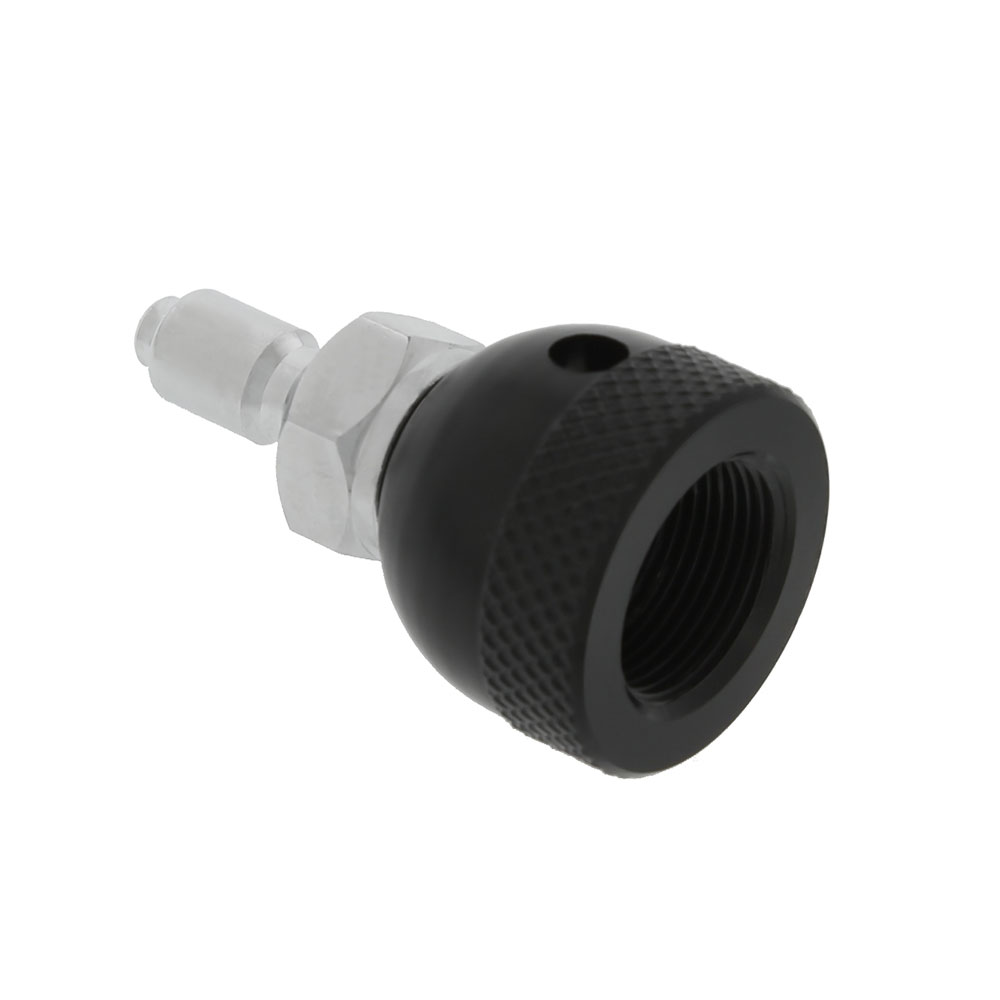You may have already answered a question that I was going to ask. I was wondering if the CO sensors were able to work correctly at 2k-5kpsi. Your post would seem to indicate that a bleeder is attached to the output & a small amount is sent to the sensor then expelled as waste gas.Neighbors having a bbq is also good for some CO intake.
There's another way to get alerted of CO leaving your compressor. I used a metal filter housing like the one shown below, but without the filter cartridge. Instead, I filled the housing with hopcalite and placed it on the feed line going from the compressor to the airbanks.
View attachment 698799
When CO is present in the air intake, it goes through the compressor and then enters this filter housing. The hopcalite will start turning CO into CO2 and while doing that, it gets hot. Since the hopcalite touches the metal housing, the housing will warm up as well.
The cheapest (and first) detection is done with a $0.30 temperature sensor that is sensitive enough to measure a 0.1 degree difference.
A processing unit can keep track of temperature rise per timeframe and shutdown the compressor in case the increase is too much.
The second detection is done by letting some air pass through a needle valve / flow limiter and direct it over a ZE07-CO sensor ($10-$15). The same unit reading the temperature can also read the CO sensor and shutdown the compressor in case of 1ppm CO detection.
My experience that in such situations, the temperature alerts me of CO presence in the ambient air, but the hopcalite is doing exactly what it needs to do and no CO passes that filter (but I still shut down the compressor and wait until the neighbors are done).
You are using an out of date browser. It may not display this or other websites correctly.
You should upgrade or use an alternative browser.
You should upgrade or use an alternative browser.
Filling and Humidity
- Thread starter ATJ
- Start date
Please register or login
Welcome to ScubaBoard, the world's largest scuba diving community. Registration is not required to read the forums, but we encourage you to join. Joining has its benefits and enables you to participate in the discussions.
Benefits of registering include
- Ability to post and comment on topics and discussions.
- A Free photo gallery to share your dive photos with the world.
- You can make this box go away
You may have already answered a question that I was going to ask. I was wondering if the CO sensors were able to work correctly at 2k-5kpsi. Your post would seem to indicate that a bleeder is attached to the output & a small amount is sent to the sensor then expelled as waste gas.
I don't know of any recreational use analyzer that can withstand HP. I have an O2 analyzer and I use an inline flow restrictor to pump it right to the sensor and because it's a set low pressure my readings are consistent. I bought one of these, I don't remember the price being that high. It's "wasted" gas, but it's such a small amount when using a restrictor. Trying to dial in just a tank valve just seemed like it wasted a lot more gas. Now I get just the smallest hiss.

Palm BC Hose 2 LPM Flow Adapter
Use this 2 liter-per-minute flow adapter with your Palm Analyzer (O2 or CO) to allow you to check your tank mix with your BC inflator hose.
The threads on an O2 sensor screw right on, I like it a lot and makes it easy to analyze tanks. Maybe one day I'll add a fitting to analyze directly inline from the compressor, but it will still be HP, to LP, to flow limiter, to analyzer.
Lots of different options out there;
Northeast Scuba Supply Store - Search Results for "restrictor"
john@northeastscubasupply.com
For my fellow Americans out there:
20c = 68f
25c = 77f
30c = 86f
35c = 95f
- Messages
- 14,194
- Reaction score
- 11,459
- Location
- Port Orchard, Washington State
- # of dives
- 1000 - 2499
Most people widely underestimate the temperature of the gas in their final separator.I found this chart in the 2005 Bauer Jr II manual -
View attachment 698811
The filter with no CO removal had slightly better capacity numbers. It was on the previous page.
The manual can be found here - JUNIOR
For my fellow Americans out there:
20c = 68f
25c = 77f
30c = 86f
35c = 95f
Similar threads
- Replies
- 77
- Views
- 5,524
- Replies
- 8
- Views
- 694
- Replies
- 15
- Views
- 1,028
- Replies
- 21
- Views
- 1,388



